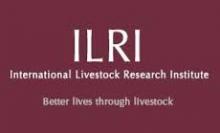Location
Vision, mission and strategy
ILRI's strategy 2013-2022 was approved in December 2012. It emerged from a wide processof consultation and engagement.
ILRI envisions... a world where all people have access to enough food and livelihood options to fulfil their potential.
ILRI’s mission is... to improve food and nutritional security and to reduce poverty in developing countries through research for efficient, safe and sustainable use of livestock—ensuring better lives through livestock.
ILRI’s three strategic objectives are:
- with partners, to develop, test, adapt and promote science-based practices that—being sustainable and scalable—achieve better lives through livestock.
- with partners,to provide compelling scientific evidence in ways that persuade decision-makers—from farms to boardrooms and parliaments—that smarter policies and bigger livestock investments can deliver significant socio-economic, health and environmental dividends to both poor nations and households.
- with partners,to increase capacity among ILRI’s key stakeholders to make better use of livestock science and investments for better lives through livestock.
This is ILRI’s second ten-year strategy. It incorporates a number of changes, many based on learning from the previous strategy (2000–2010, initially produced in 2000 and modified in 2002), an interim strategy (2011–2012) and an assessment of the external and internal environments in which the institute operates.
Members:
Resources
Displaying 1 - 5 of 1152A participatory epidemiological study of major cattle diseases amongst Maasai pastoralists living in wildlife-livestock interfaces in Maasai Mara, Kenya
Livestock-wildlife interactions promote the transmission of a wide range of infectious diseases that constraint livestock production. We used a participatory appraisal approach to find out and rank infectious diseases of concern to pastoralists in a zone of intense wildlife-livestock interaction and another zone with limited interactions. Four villages were selected purposively in areas with intensive cattle-wildlife interactions (zone 1), and another two in areas with low to moderate cattle-wildlife interactions (zone 2).
Wastewater reuse in agriculture and health in Vietnam
The study provides a framework to estimate the health risk of farmers using wastewater in agriculture.
The study addresses the SDG 6.3: to contribute to inform water recycling and reuse.
Exposure to wastewater via contact with Nhue River water, pond water and composted excreta represents an important health risk.
Study results are useful in developing an integrated strategy for risk management in the agricultural settings.


